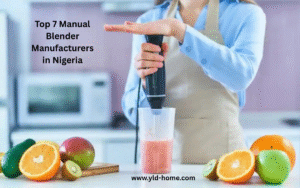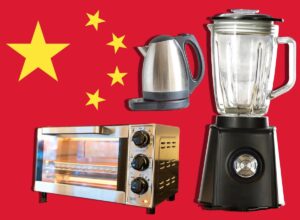When it comes to maintaining your espresso machine, cleanliness is absolutely key. Let’s face it, coffee is dirtier than we think, and despite a concerted effort to reduce contamination, the reality is that coffee machines are only going to be as clean as the last person to use them.
That being said, clean doesn’t necessarily mean regular. So how often should you clean your espresso machine? The answer will depend on several factors, including how frequently you use it, how much coffee it makes, and how delicate your equipment is. In this article, we’ll discuss the importance of cleaning your espresso machine, as well as the best methods for doing so.
What Parts of Your Espresso Machine Need to be Cleaned?
Before we get into the nitty-gritty of how often to clean your espresso machine, it’s important to understand what needs cleaning.
Your espresso machine’s boiler is the heart of the machine — it’s what heats water to the correct temperature and pressure for brewing.
That being said, it’s also where most of the gunk builds up. So the first thing you should clean is the boiler itself. And since the inside of your boiler gets dirty really quickly, you should do this weekly.
Use the same method you would use to clean a cast iron skillet — straight vinegar and a scrub brush.
To clean your portafilter (the part that holds the coffee), clean burr grinder baskets, and other removable parts, clean them in the dishwasher once a week.
Why Is Regular Espresso Machine Maintenance Important?
Despite the best efforts of barista’s and home coffee drinkers alike, the reality is that coffee is dirty. And since coffee machines are used with dirty hands, they’re going to get dirty too. So it’s important to clean your machine regularly, not only to maintain a clean machine, but also to reduce the risk of cross-contamination.
Cross-contamination is the transfer of harmful bacteria from one food source to another. It’s usually a problem in food production plants, but in coffee production, contamination can happen during any part of the production process.
When coffee is ground, brewed, or served, it’s possible for harmful bacteria to be transmitted from machine to food. The danger is greatest during preparation and during service, when people often handle the coffee without wearing gloves.
Contamination can also occur if the machine is not cleaned thoroughly.
How to Maintain Your Espresso Machine
The key to effective espresso machine maintenance is preparation.
That means having a plan of attack. Do you always empty the grounds bin before cleaning the machine? Do you clean the water tank after every use?
These are important questions to ask yourself, because planning prevents improvisation — which can lead to poor maintenance practices.
Here are some steps you can take to ensure your espresso machine is clean and ready for action:
Before You Use It – Before you use your espresso machine, clean it. Remove all remaining water in the tank and filter basket, and empty the grounds bin. Also, give the machine a good cleaning both inside and out, ensuring all removable parts are thoroughly cleaned. Plan for Extra Visits – Since you’ll be planning for regular maintenance, you might as well make it a priority to hit the calendar for another clean when you’re supposed to. Cleaning Tips – Here are a few tips on how to make the most of your machine’s cleaning: Use an automatic cleaning cycle with a highspin option to quickly clean the inside of your machine.
Use filtered or bottled water for cleaning, because ground coffee contains minerals that can build up in the water tank and Grinder.
Clean the inside of your machine after every use, even if you don’t think it needs it. You never know what sort of gunk has accumulated inside your machine. Remember to Dry It – Even though you’re planning for extra visits, don’t forget to clean the inside and outside of your machine as well. Dry all parts thoroughly to avoid mold and mildew growth.
The Best Way to Clean Your Espresso Machine
Now that you know what parts of your espresso machine need cleaning, we can get down to the best way to clean it. Cleaning the outside of your machine is easy — just make sure to remove all water and grime.
If you’re cleaning the inside of your machine, you’ll want to use a cleaning agent that is both abrasive and non-toxic.
Some of the best ways to clean your espresso machine include:
Foaming cleaner – For cleaning the exterior of your machine, try using a cup of baking soda and a few squirts of dish soap. Simply mix the ingredients in a cup and use a sponge or soft cloth to clean the outside of your machine.
Coffee cleaner – A mild coffee-based cleaner is perfect for cleaning the inside of your machine, as it’s water-based and free of ammonia. Simply combine a tablespoon of vinegar with a tablespoon of salt in a spray bottle.
Cleaning tablets – Although they are more expensive, espresso machine cleaning tablets are a great option for heavily-soiled machines. Simply place one tablet in the water tank and one in the filter basket, then run a cleaning cycle with water to activate the tablet.
Espresso Machine Cleaning Tablets
One of the most convenient ways to clean your espresso machine is with a cleaning tablet.
They’re easy to use, require no measuring or dilution, and can be purchased almost anywhere cleaning products are sold.
Here are some of the best espresso machine cleaning tablets on the market:
Ending
When it comes to maintaining your espresso machine, cleanliness is absolutely key. Let’s face it, coffee is dirtier than we think, and despite a concerted effort to reduce contamination, the reality is that coffee machines are only going to be as clean as the last person to use them.
That being said, clean doesn’t necessarily mean regular. So how often should you clean your espresso machine? The answer will depend on several factors, including how frequently you use it, how much coffee it makes, and how delicate your equipment is. In this article, we’ll discuss the importance of cleaning your espresso machine, as well as the best methods for doing so.






